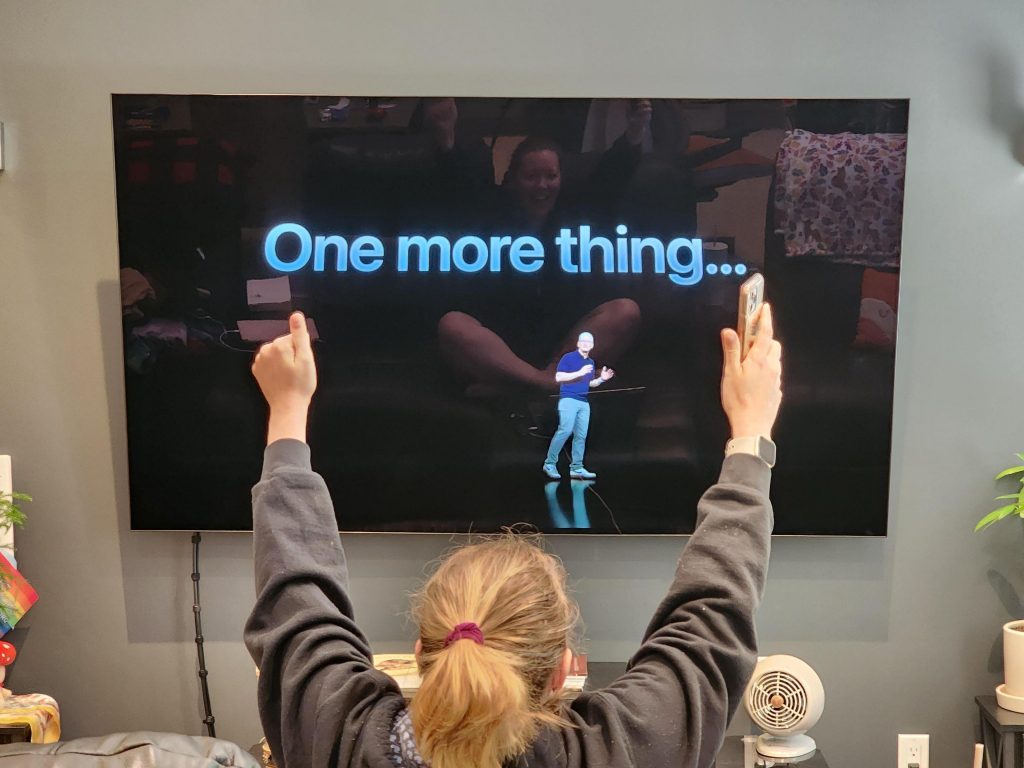In the Era of Multi-Dimensional Computing, XR is the Future of Front-End; AI is the Future of Back-End
Yes, this post is intentionally over-loading the concepts of front-end and back-end, why do you ask?
Today, Apple announced the Apple Vision Pro – after years of speculation, I legitimately teared up watching the keynote today when I experienced my “one more thing” moment and saw another pivotal moment for the future of embodied, spatial computing devices.

My work over the past ten+ (wtf?) years has focused on emerging technologies, primarily spatial computing and machine learning – so this moment is pretty spectacular to see. We’re entering a new age where generative AI can create infinite worlds of content as a tool to aid and augment human creativity and understanding, and with today’s announcement, we’re creeping ever-closer to advancements in spatial computing hardware that allows us to experience technology in ways that allow us to use our natural cognition to better facilitate our relationship to information.
The internet has changed our lives dramatically over the past two decades. Digital platforms expose us to a constant barrage of news, updates, and content. We can connect with others around the world instantaneously, watch videos on virtually any conceivable topic, and instantly shop at millions of stores from the palm of our hands.
When people talk about AI, the metaverse, web3, – they’re coming up with new ways to describe future iterations of the applications and devices that we’re already using today. The ideas speak to a continually blurring line for how we experience technology in our daily lives.
At the core, this is all about changing the way that we engage with information, each other, and the world around us. That means that we’re seeing the best of people, but the existing power structures and problems that we face in the physical world will be replicated unless we take explicit action to stop that.
It’s a rapidly evolving, complicated space. For a wide range of creators – whether they’re working on spatial computing and artificial intelligence technologies or not – generative AI presents complicated sentiments. Some go so far as to call all artificial intelligence as being “anti-human”, while others are pushing the boundary in how the technology can be used to create new art forms.
All of this work is pushing forward two key areas:
- The way that computational systems are designed to process and create systems for navigating and exploring data (artificial intelligence)
- The forms available to humans to interact with new types of applications and interfaces (spatial computing)
When we think about experiential computing as an overarching umbrella that encompasses artificial intelligence as the “back-end” and XR as the “front-end”, the way that these two types of technology interplay with one another becomes quite clear. They are not separable paradigms – independently, they will hit a limit to their evolution far earlier than they will when we begin to think of XR as a multi-modal presentation layer for the way that machines predict input and recall information.
We’re in for a wild ride the next few years.